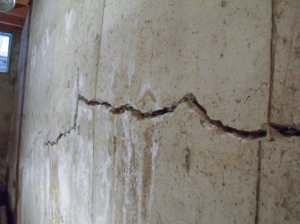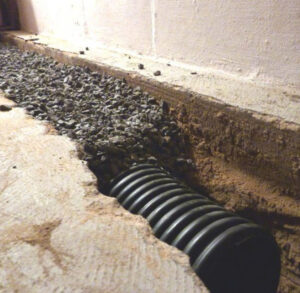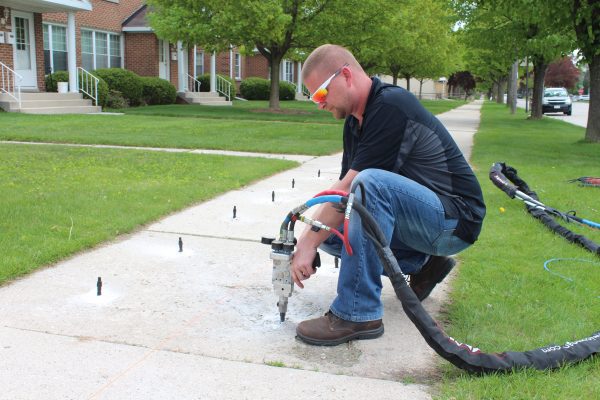
- By Christian Sundahl
- In foundation repair, Foundation Repair Techniques
- Tags Foundation Repair, Foundation Repair Techniques
Exploring Foundation Repair Techniques: Ensuring Structural Stability
The foundation of a building serves as its backbone, providing support and stability to the entire structure. However, over time, various factors such as soil movement, water infiltration, and structural stress can compromise the integrity of the foundation, leading to cracks, settlement, or even collapse. Foundation repair techniques are essential to address these issues and restore the structural stability of buildings. In this article, we will explore common foundation repair techniques used by professionals, their applications, and their effectiveness in resolving different types of foundation problems.
1. Foundation Underpinning
Foundation underpinning is a technique used to strengthen and stabilize the foundation by extending its depth or width. It involves installing additional support beneath the existing foundation to transfer the load to deeper, more stable soil layers. Several methods of foundation underpinning are commonly employed:
- Mass Concrete Underpinning: This traditional method involves excavating sections of the foundation in sequence and pouring concrete to create new foundation supports beneath the existing footings. Mass concrete underpinning is suitable for shallow foundations and provides strong, long-lasting support.

- Pile Underpinning: Pile underpinning involves driving steel or concrete piles into the ground beneath the existing foundation to provide support. These piles can be driven individually or in clusters, depending on the structural requirements and soil conditions. Pile underpinning is effective for deep foundations or when soil conditions are unsuitable for other underpinning methods.
- Helical Piers: Helical piers are screw-like steel shafts with helical plates that are twisted into the soil beneath the foundation. Once installed, they provide support and stability by bearing the weight of the structure. Helical piers are versatile and can be used for both residential and commercial foundation repair projects.
- Concrete Pressed Piles: Concrete pressed piles are precast concrete cylinders that are driven into the ground using hydraulic jacks. These piles are installed at regular intervals along the foundation perimeter to provide support and stabilize the structure. Concrete pressed piles are cost-effective and can be installed quickly with minimal disruption to the surrounding area.
Foundation underpinning techniques are effective for addressing foundation settlement, soil subsidence, and other structural issues caused by inadequate soil support.
2. Foundation Crack Repair
Cracks in the foundation are a common problem that can compromise the structural integrity of a building and lead to water infiltration, moisture damage, and mold growth. Foundation crack repair techniques are essential to prevent further damage and restore the structural stability of the foundation. Several methods of foundation crack repair are commonly used:
- Epoxy Injection: Epoxy injection is a popular method for repairing non-structural cracks in concrete foundations. It involves injecting an epoxy resin into the crack under pressure to fill and seal the void. Once cured, the epoxy forms a strong bond with the surrounding concrete, preventing water infiltration and reinforcing the crack.
- Polyurethane Injection: Polyurethane injection is similar to epoxy injection but uses a flexible polyurethane resin instead. This method is suitable for repairing hairline cracks or cracks that may experience movement due to thermal expansion and contraction. Polyurethane injection creates a watertight seal and provides excellent flexibility and durability.
- Carbon Fiber Reinforcement: Carbon fiber strips or sheets can be applied to the surface of the foundation walls to reinforce and stabilize cracked areas. These high-strength materials are lightweight and easy to install, providing added structural support without the need for extensive excavation or intrusive repairs. Carbon fiber reinforcement is particularly effective for preventing further cracking and structural movement.
Foundation crack repair techniques are essential for addressing foundation cracks and preventing further damage to the structure.
3. Grouting and Soil Stabilization
Grouting and soil stabilization techniques are used to address foundation settlement, soil erosion, and other soil-related issues that can affect the stability of the foundation. These techniques involve injecting grout or other stabilizing materials into the soil to improve its load-bearing capacity and prevent further settlement. Common methods of grouting and soil stabilization include:
- Compaction Grouting: Compaction grouting involves injecting a low-mobility grout into the soil beneath the foundation to densify and stabilize loose or unstable soil. The grout is injected at high pressure, causing it to expand and compact the surrounding soil. Compaction grouting is effective for lifting and stabilizing settled foundations and mitigating future settlement.
- Chemical Grouting: Chemical grouting, also known as permeation grouting, involves injecting a liquid grout into the soil to fill voids, stabilize loose soil, and improve its load-bearing capacity. The grout reacts with the soil to form a solid, impermeable mass, providing long-term stability and support. Chemical grouting is often used in conjunction with other foundation repair techniques to address soil-related issues.
- Deep Soil Mixing: Deep soil mixing involves mechanically mixing stabilizing agents such as cement, lime, or fly ash with the soil to improve its strength and stability. This technique is commonly used for soil stabilization in areas with soft, weak, or expansive soils. Deep soil mixing creates a solid, homogeneous mass that provides strong support for the foundation and prevents settlement.
Grouting and soil stabilization techniques are essential for addressing soil-related foundation problems and ensuring the long-term stability of the structure.
4. Waterproofing and Drainage Improvement
Water infiltration into the foundation can cause a range of problems, including foundation cracks, settlement, and mold growth. Waterproofing and drainage improvement techniques are essential for protecting the foundation from water damage and maintaining its structural integrity. Common methods of foundation waterproofing and drainage improvement include:
- Exterior Waterproofing: Exterior waterproofing involves applying a waterproof membrane or coating to the exterior surface of the foundation to prevent water infiltration. This method creates a barrier that repels water and redirects it away from the foundation, reducing the risk of water damage and structural problems.
- Interior Waterproofing: Interior waterproofing involves installing a waterproof membrane or coating on the interior surface of the foundation to prevent water infiltration from the inside. This method is often used in conjunction with exterior waterproofing to provide added protection against water damage and moisture problems.
- French Drains: French drains are subsurface drainage systems that collect and redirect groundwater away from the foundation. They consist of a perforated pipe surrounded by gravel or aggregate and are installed alongside the foundation footing to intercept and drain water before it can infiltrate the foundation.
- Sump Pump Installation: Sump pumps are devices that are installed in the basement or crawlspace to remove excess water and prevent flooding. They collect water from drains or groundwater seepage and pump it out of the building to a safe location away from the foundation.
Waterproofing and drainage improvement techniques are essential for protecting the foundation from water damage and maintaining its structural integrity.
Foundation repair techniques play a crucial role in maintaining the structural stability and integrity of buildings. Whether addressing foundation settlement, cracks, soil instability, or water infiltration, professionals employ a range of techniques to diagnose and resolve foundation problems effectively. By understanding the various foundation repair techniques available, homeowners can work with professionals to implement a tailored solution that addresses their specific needs and ensures the long-term stability of their home or building. By prioritizing foundation repair and maintenance, homeowners can protect their investments and enjoy a safe and secure living environment for years to come.
Contact the Professionals at Sundahl Waterproofing Today! (914) 639-6344






